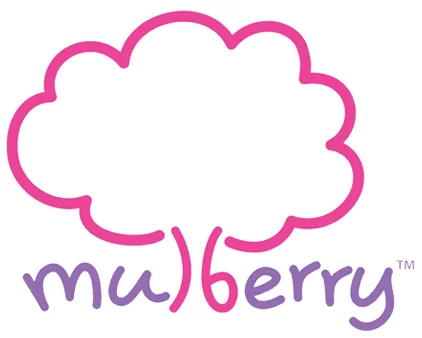5 Eco-Friendly Projects for Preschoolers
5 Eco-Friendly Projects for Preschoolers
Introducing young children to the concept of sustainability can be both fun and educational. By engaging preschoolers in eco-friendly projects, parents can instil a love for nature in them and teach them valuable lessons about environmental responsibility.
In this article, we explore five engaging eco-friendly projects for preschoolers, providing detailed steps and necessary tools for each activity. These projects are designed to fit seamlessly into daily routines, making sustainability a natural part of their lives.
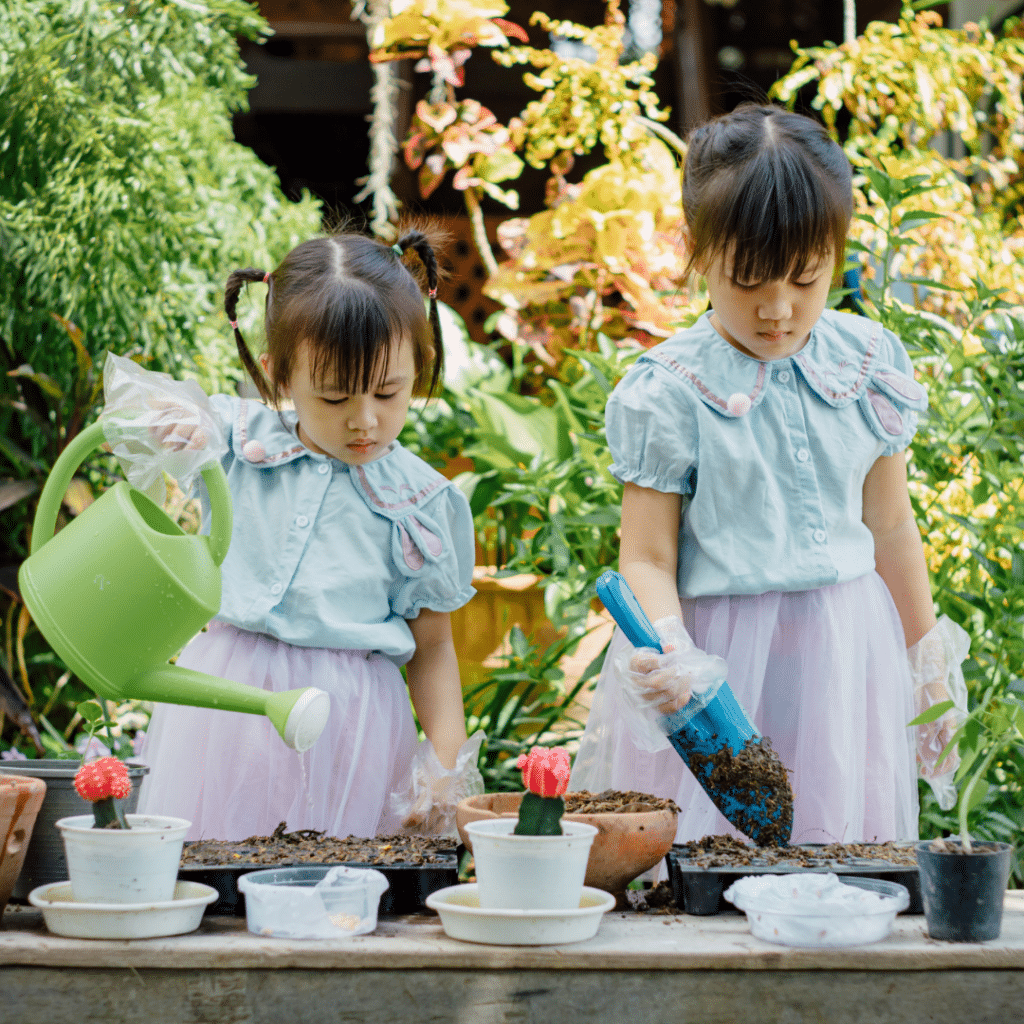
1. Gardening with Little Hands
Gardening is a fantastic way for children to connect with nature. It provides hands-on experience with plant life and teaches important lessons about sustainability for kids and how to care for the environment.
Materials needed:
- – Child-friendly gardening tools
- – Seeds or seedlings
- – Soil and pots or garden space
Instructions for the project:
- Choose a Suitable Gardening Space: Select a spot in your garden or use pots if space is limited.
- Demonstrate Planting: Show children how to plant seeds or seedlings properly.
- Teach Watering and Care: Explain how to water the plants and the importance of regular care.
- Discuss Environmental Impact: Talk about the role of plants in the ecosystem.
Here is an example of what you can say during the discussion:
Parent: “Let’s talk about something cool about plants. Do you know why plants are important?”
Child: “Um, because they grow everywhere?”
Parent: “That’s right! Plants do grow everywhere, and they do many important things. For example, they help us breathe by making oxygen.”
Child: “Oh, so plants help us breathe?”
Parent: “Exactly! Plants also give us food, like fruits and vegetables. Animals like rabbits and deer eat plants too. Without plants, many animals wouldn’t have food.”
Child: “Wow, plants do a lot of things!”
Parent: “Yes, they do! Plants keep the soil healthy by holding it in place with their roots. This helps the ground stay strong for other plants and animals.”
Child: “So, plants are like superheroes for the earth?”
Parent: “Yes! Plants also clean the air and provide homes for birds, insects, and small animals. Taking care of plants helps the whole earth.”
Child: “I want to help and care for the earth too!”
Parent: “That’s great! By planting and taking care of plants, you’re helping a lot. Let’s go plant some seeds and watch our garden grow!”
Learning benefits for your child:
- – Life Cycle of Plants: Children learn about growth stages from seed to plant, fostering curiosity about nature.
- – Environmental Responsibility: Understanding how plants contribute to the environment encourages sustainable practices.
- – Care and Patience: Nurturing plants teaches children responsibility and the rewards of patience and dedication.
Gardening fosters a sense of responsibility, enhances fine motor skills, and provides a calming, productive activity that encourages outdoor play. It is an excellent way to incorporate preschool environmental education into daily routines.

2. Creative Recycling Crafts
Recycling crafts are sometimes taught in preschool, showing children how everyday items can be repurposed into something new and useful.
Materials needed:
- – Clean, old/ used tin cans
- – String or yarn
- – Safe scissors and glue
- – Paints and markers
- – Small bells or beads (optional)
Instructions for the project:
- Collect and Clean Materials: Parents should clean the old tin cans to ensure they are safe to use.
- Plan Craft Projects: Decide on a project, like making wind chimes from old tin cans.
- Guide the Crafting Process: Help children paint and decorate the tin cans.
- Assemble the Wind Chime: Assist children in tying the decorated tin cans together using string or yarn. Optionally, add small bells or beads to enhance the sound.
- Explain Recycling Benefits: Discuss the importance of recycling and how it helps the environment.
Parent: “Did you know recycling also helps keep our Earth clean?”
Child: “How does it do that?”
Parent: “When we recycle, we take old things like these tin cans and make them into something new. This means less trash, which helps keep our world cleaner. It also saves energy because we’re using old materials instead of making new ones.”
Child: “So, it’s good for the Earth?”
Parent: “Exactly! And by making crafts like this wind chime, we’re having fun and helping the Earth. Every little bit helps. When we recycle, we give old things a new life, and that’s great!”
Learning benefits for your child:
- – Waste Reduction: Children learn the importance of reducing waste by reusing materials.
- – Creative Problem-Solving: Crafting with recyclables encourages innovative thinking.
- – Sustainability Awareness: Understanding the recycling process helps children appreciate the impact of their actions on the environment.
- – Sound Exploration: Wind chimes introduce children to the concept of sound and how different materials create different tones.
Recycling craft projects enhance creativity, improve fine motor skills, and promote environmental consciousness from a young age. This activity supports sustainability for kids and encourages them to think about how they can make a difference.
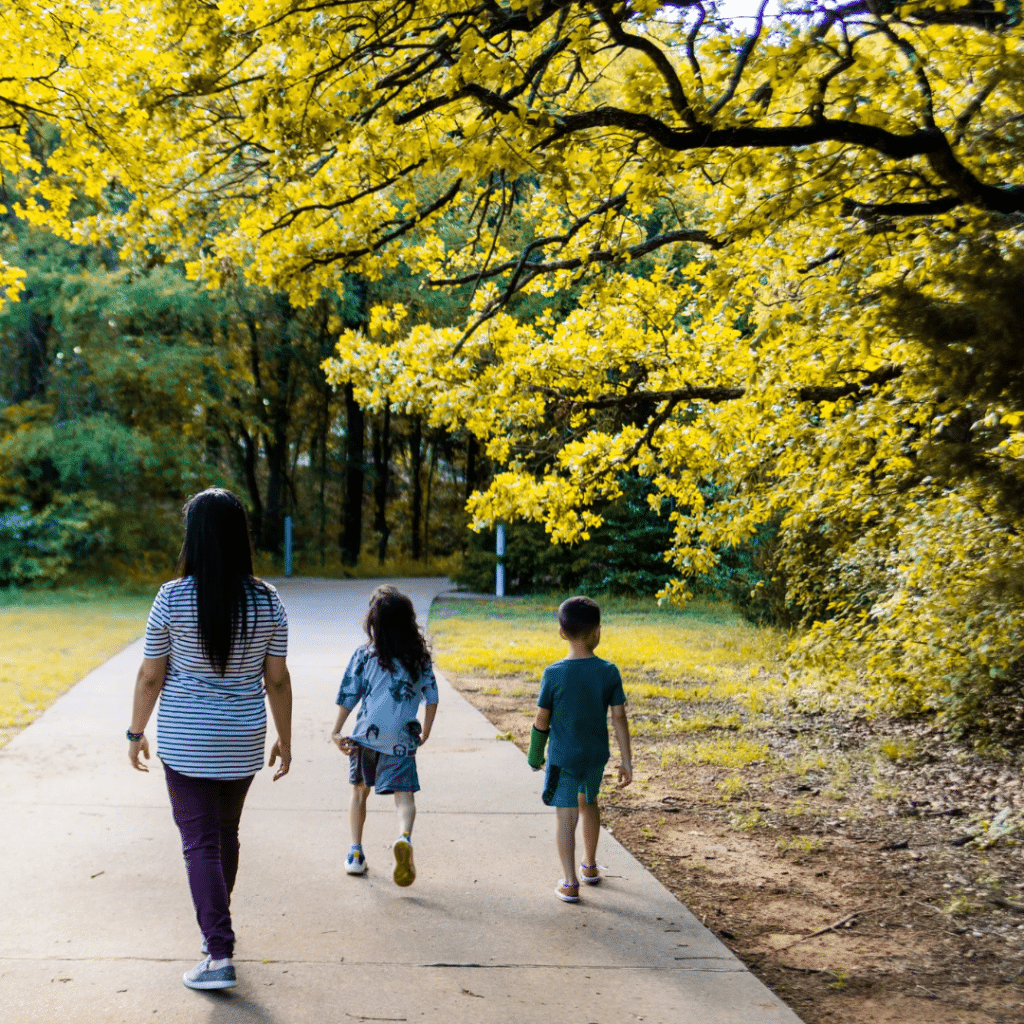
3. Nature Walk and Scavenger Hunt
Nature walks are a great way to connect children with the natural world. Adding a scavenger hunt makes the experience interactive and educational.
Materials needed:
- – Scavenger hunt checklist
- – Magnifying glasses
- – Notebooks and pencils
Instructions for the project:
- Plan a Nature Trail: Choose a safe, child-friendly path.
- Create a Scavenger Hunt List: Include items like leaves, rocks, flowers, and insects.
- Equip with Tools: Give children magnifying glasses and notebooks for observations.
- Explore and Discover: Guide them through the trail, helping them identify and learn about different natural items.
Learning Benefits:
- – Observational Skills: Enhances attention to detail and encourages curiosity about the natural world.
- – Biodiversity Awareness: Teaches children about different plants, insects, and animals, and their roles in the ecosystem.
- – Environmental Appreciation: Instils a sense of wonder and respect for nature, allowing them to learn about the different ecosystems, species, and natural processes that sustain life on Earth.
Nature walks promote physical activity, reduce stress, and enhance children’s understanding and appreciation of the natural world. This activity is a practical approach to preschool environmental education.
4. DIY Eco-Friendly Toys
Creating toys from sustainable materials is not only fun but also teaches children about the environmental impact of the products they use.
Materials needed:
- – Used cardboard
- – Safe crafting tools (non-toxic glue, paints)
- – Basic patterns or templates
Instructions for the project:
- Choose a Toy Project: Select a simple toy to make, like a cardboard car.
- Gather Materials: Use natural and non-toxic materials, such as recycled cardboard.
- Guide the Creation Process: Assist children in making their toys.
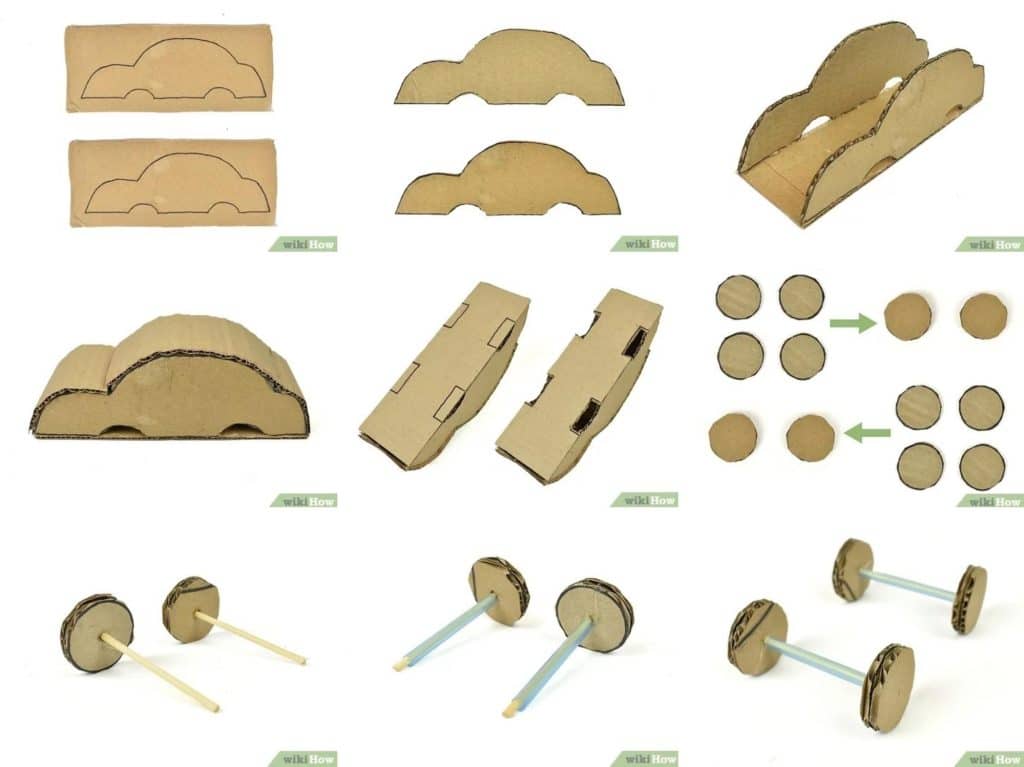
Steps to Make Cardboard Car:
- Draw the 2 identical outlines of a car’s profile on 2 pieces of cardboard.
- Cut out the 2 outlines with a strong pair of scissors.
- Use strong glue, to glue the 2 side pieces to a bottom piece
- Make a roof for your car with another piece of cardboard.
- Make room for the wheels by cutting small rectangles out of the car’s bottom.
- Trace out the wheels with a bottle cap.
- Put a skewer through 2 of the wheels. Use your box cutter to punch a small hole through 1 of the wheels.
- Slide a segment of plastic straw over the 2 skewers.
- Slide the other 2 wheels on the ends of the skewers to complete your axles.
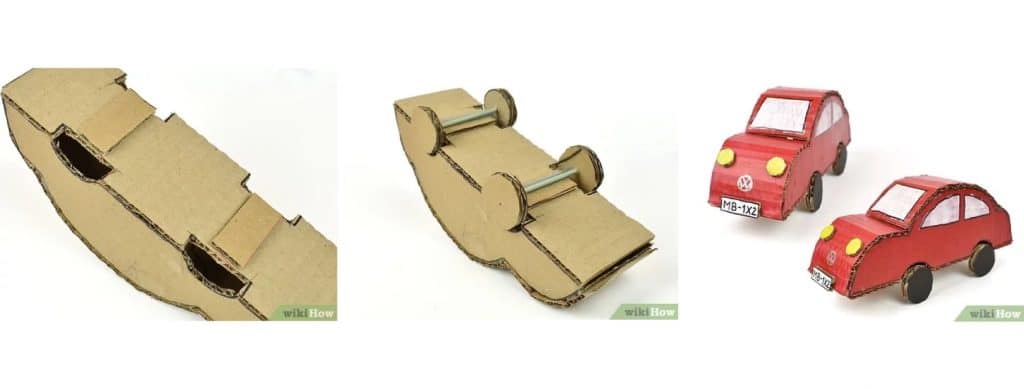
- Attach a rectangular piece of cardboard to the space between the wheel wells.
- Affix the axles onto these rectangular pieces with glue.
- Add any details you’d like. You can paint your car or draw designs on it.
Learning Benefits:
- – Sustainable Materials: Children learn the benefits of using natural, non-toxic materials.
- – Crafting Skills: Enhances creativity, better motor skills, and problem-solving abilities.
- – Environmental Impact: Teaches the importance of reducing any plastic use and choosing sustainable options.
DIY eco-friendly toys foster creativity, provide a sense of accomplishment, and promote sustainable practices. It also introduces children to the concept of sustainability for kids in a tangible way.
5. Composting
Composting is an excellent way to teach children about the natural recycling process of organic waste. It helps them understand how food scraps and garden waste can be transformed into valuable nutrient-rich compost for plants.
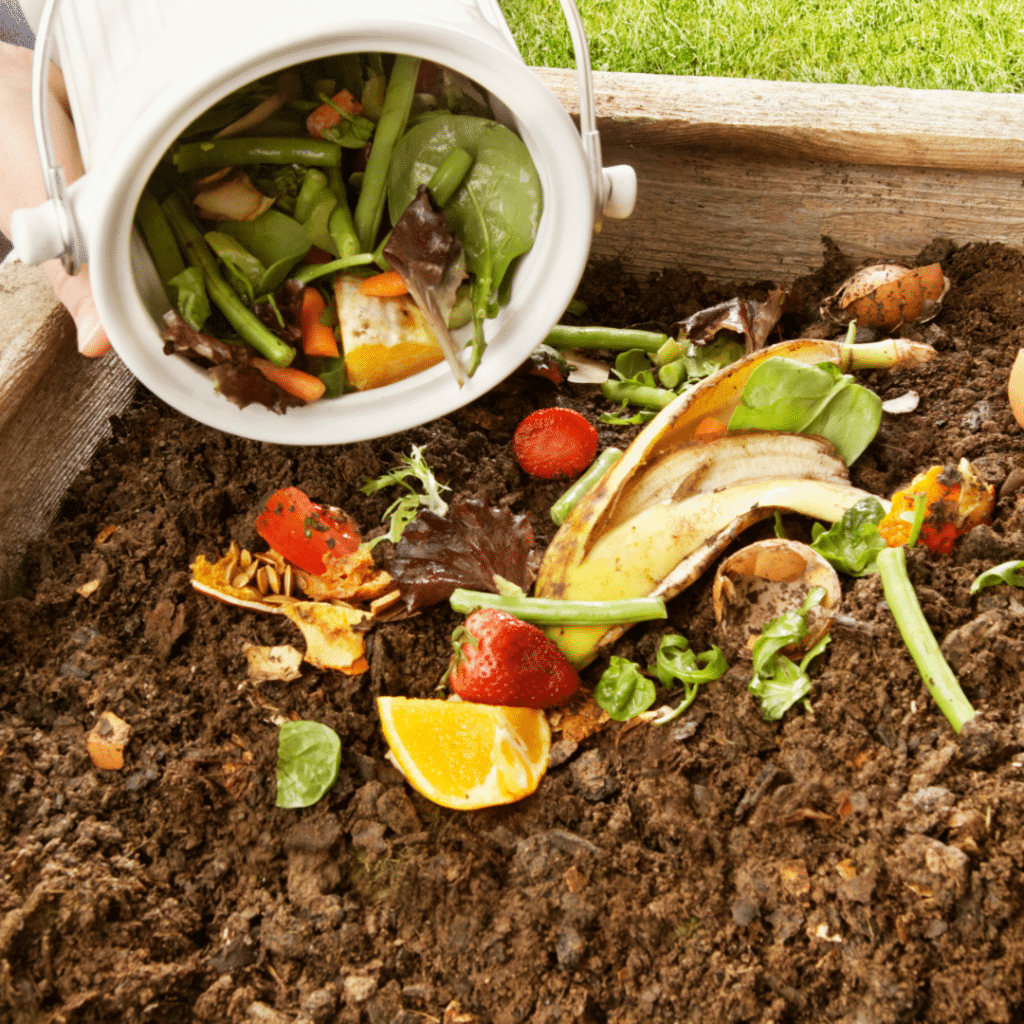
Materials needed:
- Compost bin or compost pile
- Kitchen scraps (fruit and vegetable peels, coffee grounds, eggshells)
- Garden waste (leaves, grass clippings, small branches)
- Garden fork or shovel
Instructions for the project:
- Set Up a Compost Bin: Choose a suitable spot in your garden for the compost bin or pile. Explain to children that this will be their special area to recycle organic waste.
- Gather Organic Waste: Involve children in collecting kitchen scraps and yard waste. Make sure to include a variety of materials to create a balanced compost mix.
- Layering the Compost: Teach children how to layer green (kitchen scraps) and brown (yard waste) materials in the compost bin. Explain the importance of maintaining a balance for efficient composting.
- Turn the Compost: Show children how to turn the compost regularly using a garden fork or shovel. This helps aerate the pile and speeds up the decomposition process.
- Monitor the Progress: Encourage children to observe the changes in the compost over time. Explain how the materials break down and turn into nutrient-rich soil.
Learning Benefits:
- Understanding Decomposition: Children learn about the natural process of decomposition and how organic materials break down into compost.
- Environmental Responsibility: Composting teaches children the importance of recycling organic waste and reducing landfill contributions.
- Science and Nature Connection: Observing the composting process fosters curiosity about natural cycles and environmental science.
- Gardening Skills: Using compost in the garden reinforces the connection between composting and healthy plant growth.
Composting is a hands-on activity that enhances children’s understanding of natural processes and environmental responsibility. It also provides an excellent opportunity to introduce basic scientific concepts in a practical and engaging way. It is an essential part of preschool environmental education.
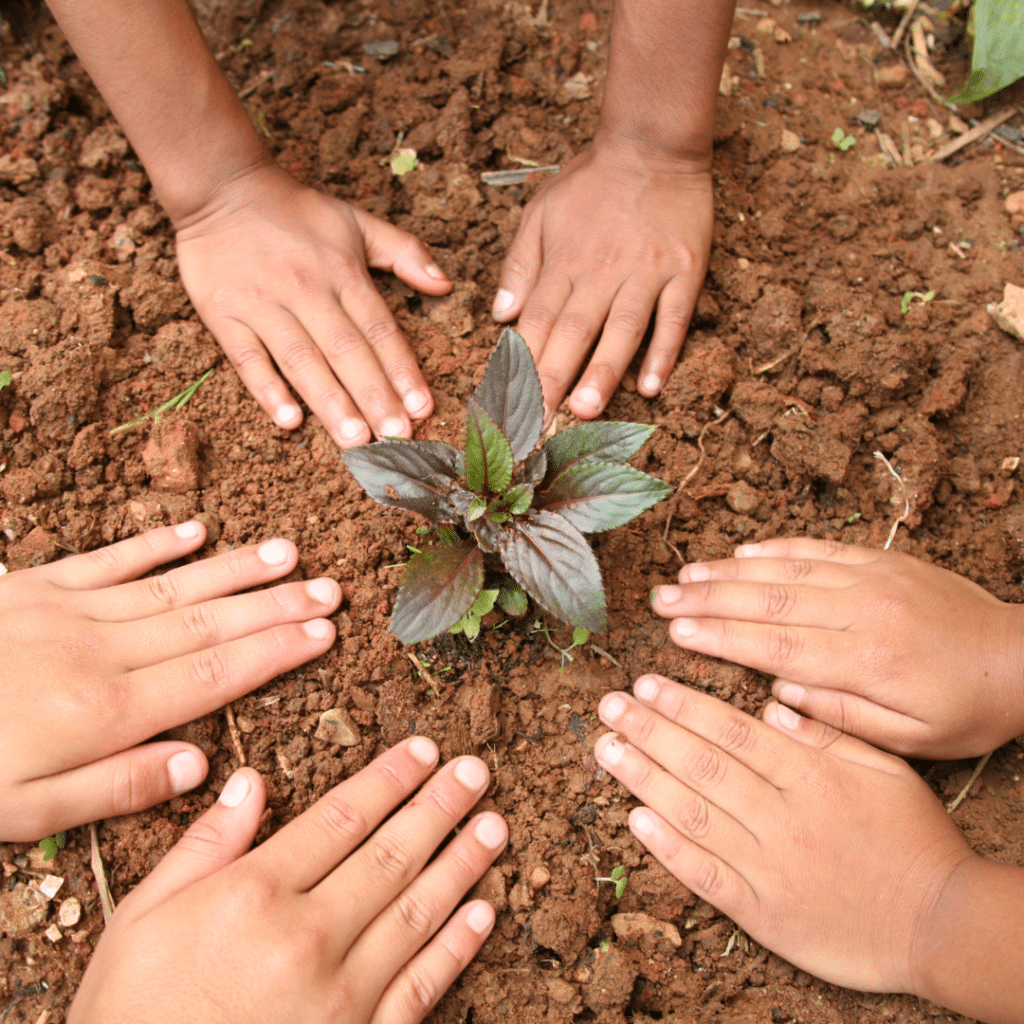
Conclusion
These five eco-friendly projects for preschoolers not only provide fun and engaging activities but also teach important lessons about sustainability for kids. By incorporating these projects into daily routines, parents can nurture an early appreciation for the environment and instil lifelong habits of environmental stewardship, as the activities help them understand their roles in protecting the planet.
Mulberry School Tour
Our Locations
Click here to visit our Contact Us page and view the preschool/infant care centres conveniently located near you.
CONNECT WITH US
USEFUL LINKS
About Us
Mulberry Learning prides itself on making the preschool experience both memorable and enjoyable while transforming a child into a competent explorer, an imaginative thinker, and a creative problem solver. Through our proprietary award-winning curriculum, unique Habits of Mind programme and dedicated staff who are passionate about imparting positive attitudes, Mulberry Learning holds strong in its promise to deliver a holistic education that nurtures the Future Ready Child.
A PREMIUM PRESCHOOL BRAND UNDER GLOBAL EDUHUB

